
posted here Nov 6 2016
added preface Note Jan 17 2017
1888 family home photo added Oct 5 2018
Notes, typos and photos of battlefields March 15 2019
Susan begins:
By July of 1862 Albert Johannessen (or Johnson) had immigrated to America, a country in the midst of civil war and Indian unrest. Thomas Signal, a childhood friend from Longen (Lyngen?), Norway, stated in an Albert pension disability affidavit that Albert was healthy when Signal had last him seen in Chicago on July 4, 1862 prior to Albert’s military enlistment. In another military pension affidavit, Albert stated that he arrived in St. Peter, MN as an immigrant in July 1862.
(Note by Gary Gauer / His 13 years older brother, Johan Andreas Johannessen arrived the following month on the Sleipner.)
Adrianna Anderson immigrated to America in 1863 aboard the Sleipner with her parents, Elias and Beate Andersen. They disembarked in Chicago and traveled by wagon to Minnesota. The family first settled in Nicollet County, MN but moved to the Lake Lillian area of Kandiyohi County in the fall of 1864.
In August and September of 1862, the Sioux Indians killed about 500 settlers during an uprising in southwestern Minnesota. Treaties had been broken, settlers kept pouring into the fertile farmland, and the Indians had not received promised food and supplies. Within weeks of his arrival in St. Peter, the Sioux attacked and burned nearby New Ulm on August 19 and 22. Albert, John A., and Henry Johnson (2 of his nephews) listed Oshawa, Nicollet County as their last residence when on October 29, 1862 they mustered into Company B of Minnesota’s 1st Regiment of Mounted Rangers (i.e. infantry on horse, not cavalry trained).

Hendrick, John A. & Albert Johnson mustered into Minnesota’s
1st Regiment of Mounted Rangers on Oct. 29, 1862
Hundreds of Indians were captured by the military in August and September of 1862. They received speedy trials (without defense attorneys) and 303 were sentenced to death. President Lincoln commuted the sentences of 264 Sioux, but 38 were hanged in Mankato, MN on December 26, 1862, just 10 miles south of St. Peter. Though one of Albert’s daughters reported that he was a guard at the Mankato hangings, the specific location of the Mounted Rangers’ Company B is not known for this date. About 4,000 spectators were on hand for the largest hanging in American history, a very tragic event among numerous tragic events of the Civil War years.
In the Dakota Territory (North Dakota), General Henry H. Sibley led an expedition (it included the Mounted Rangers) against the Sioux in the summer of 1863.
Note by Gary Gauer. See more about the military expeditions at
http://history.nd.gov/historicsites/civilwar-itinerary.pdf
The major battles of this expedition were: Big Mound on July 24, Dead Buffalo Lake on July 26, and Stony Lake on July 28. Albert’s daughter Hattie stated that at one battle (i.e. Big Mound) Albert’s horse was shot out from under him and his friend Mr. Stark (i.e. Gustav Stark, a Swedish immigrant) was killed. He played dead until it was safe to move and then rode off on Mr. Stark’s white horse. Albert mustered out of the Minnesota Mounted Rangers on November 9, 1863.
On Dec. 24, 1863, 28 year old Albert Johnson, his nephews Henry and John A. Johnson, and future brother-in-law Andrew Eliason (i.e. Andrew Anderson) mustered into Company B of the 2nd Regiment of Cavalry, Minnesota Volunteers. Because of their Minnesota Mounted Ranger service, the three Johnsons were each given a $60 Veteran Volunteer bounty when they signed up. Albert listed St. Peter, MN as his last residence and the other three listed Lake Prairie in Nicollet County. They had garrison duty at Fort Snelling and other posts on the Minnesota frontier until May 1864 when further Indian unrest in Dakota Territory and Minnesota brought a call for another military expedition.
In May, Albert’s regiment moved to Fort Ridgely along the Minnesota River. From June 5 through October 15, 1864, the 2nd Minnesota Cavalry became part of Colonel Thomas’ 2nd Brigade of General Alfred Sully’s 2nd Expedition. Their tasks included: confronting the Indians, building forts, and escorting 160 wagons of miners and their families to Montana (then Idaho Territory). The 2nd Brigade followed stream after stream in western Minnesota and the Dakotas, since fresh water was a necessity for their animals.
The big battle of this expedition was July 28, 1864 at Killdeer Mountain in North Dakota against the Santee and Teton Sioux. Albert’s regiment also marched west to the Yellowstone River in eastern Montana and through the “Bad Lands” of western North Dakota.
.jpg)
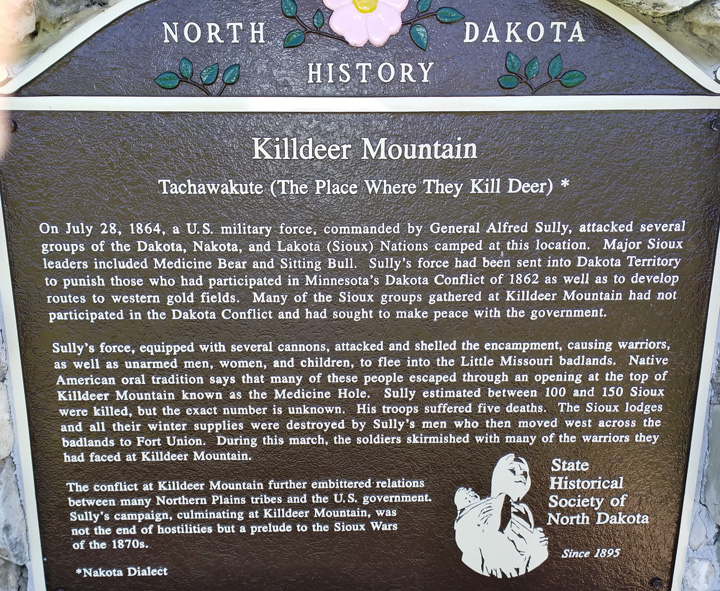
On August 18 the expedition again forded the Missouri River at Fort Union in North Dakota and parted ways with the miners’ wagon train. Albert declared in his affidavit for military disability that after fording the river that day, he was sick for a couple of weeks, sick often in the next two years, and never felt strong again the rest of his life. This crossing took a couple of days and was reported by several participants as very dangerous because the water was up to their necks when crossing on their horses. Albert also complained about the ill effects of alkali water, a real problem in the Dakotas at that time.

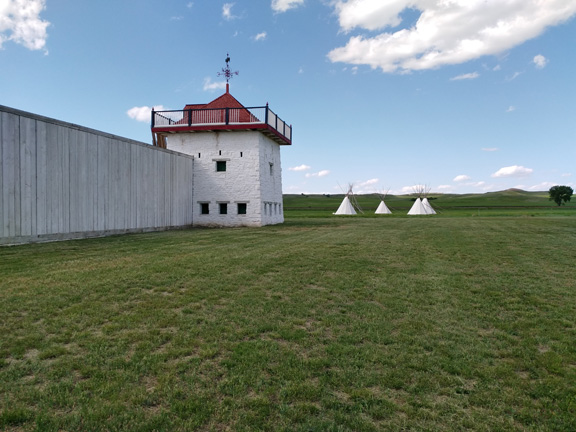
At various times on this expedition, they saw buffalo and thousands of antelope in the Dakotas. The regiment served at posts in the Minnesota/Dakota area before Albert and his nephews mustered out on December 1, 1865. These three Johnson immigrants had each spent 33 months in the cavalry.
Elias Andersen (or Anderson) rented a farm in Nicollet County after his 1863 arrival, but in the summer of 1864 he selected land in Section 5 of East Lake Lillian Township, Kandiyohi County. He put up some hay on his new property, returned to Nicollet County to thresh grain on the rented farm, and then brought his family to East Lake Lillian to temporarily reside in a 10 x 12 foot abandoned shack.
One fall morning the shack caught fire and burned to the ground, leaving the family on the wild prairie with only the clothing and bedding they managed to save from the fire. Elias and his older sons laid some rails across two haystacks and made a roof of hay or dry grass. They somehow closed the ends and made a ‘house’ which the family used until late fall or early winter when a log house was completed. The cook stove was still functional, so meals were cooked outside. A sack of flour had been rescued from the burned cabin and was used for making bread that had a unique scorched taste. Adrianna told about hunting in the early fall snow for knives and spoons that lay in the ashes of the burned shack. The temperature dropped to -20° F on December 8 and was quickly followed by 10 inches of snow.

When Adrianna’s mother Beate died in 1865, Adrianna took over the household responsibilities, something she had probably already been doing since her mother had not thrived in the new harsh land.
In 1865, Albert ended his military career on December 1 and also filed a homestead claim in Section 3 of East Lake Lillian Township (near Elias Andersen’s). The young soldiers had discovered this lovely area during their military duty. On October 25, 1866, Albert Johnson and Adrianna Anderson’s wedding party met a bear as they traveled by wagon to the village of Greenleaf in Meeker County to be married. Albert’s nephews, John A. Johnson and Nils Johnson, signed as marriage witnesses.
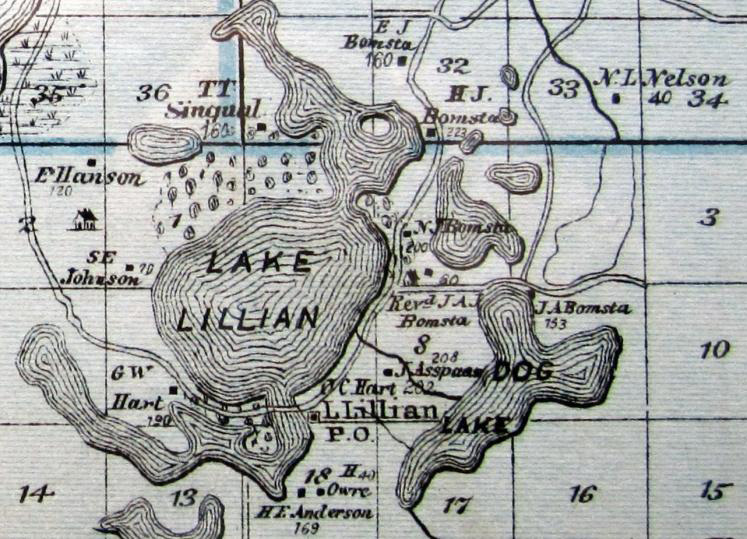
Albert built the family a log cabin which their daughter Hattie said had a large upstairs where all the children slept. The downstairs had a kitchen, dining room/bedroom, and a big walk-in pantry. She said Albert made the shelves on a turn table so they could “get at everything real easy.”
They had seven children: Bernard, Emily, Asa, Amanda, Charlotte, Hattie, and Alexander. Hattie said that young people of the neighborhood always gathered Sunday afternoons for Lottie’s doughnuts, Hattie’scookies, and Adrianna’s lefse.
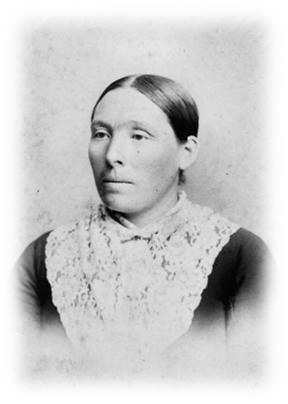
Adrianna
Adrianna’s Cookies
- 2 cups sugar
- 1 cup lard or Crisco
- 1 cup sour cream
- 3 eggs
- 1 teaspoon soda
- vanilla to taste
- flour to make soft dough
- roll thin, bake.
Note by Gary:
Apparently by 1888 they were not living in a log home as the photo
below shows a more modern type built of milled lumber.
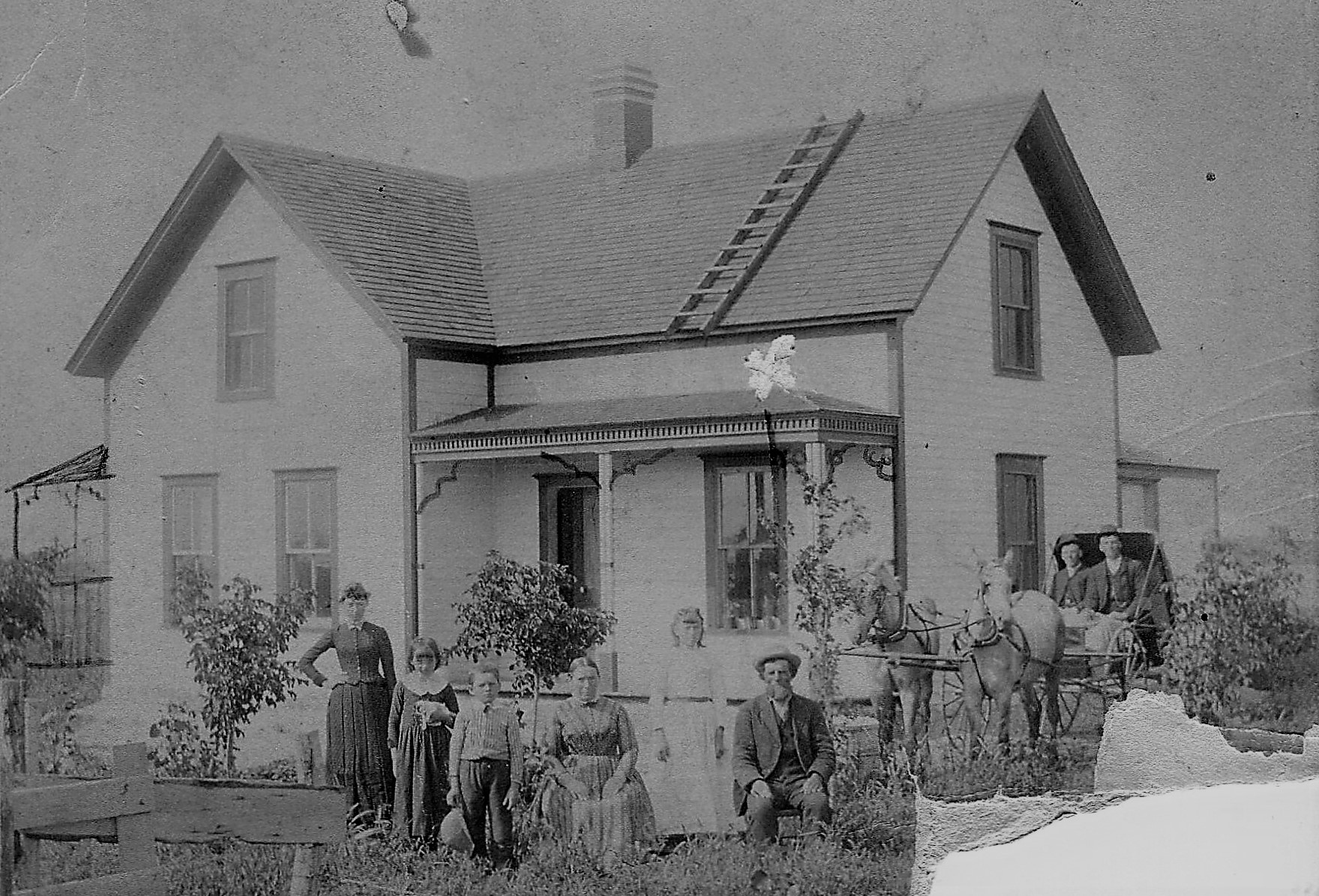
As adults, the children lived in Minnesota, North Dakota, Illinois, Washington, and Montana. Asa lived most of his 85 years in Kandiyohi County and all of Asa’s children remained in the county. Albert and Adrianna’s grandchildren (over 25) lived in Minnesota, Illinois, Montana, Florida, Arizona, Idaho, Washington, and California. In 2014, two of Albert and Adrianna’s granddaughters (Marion & Lyla) are still living at ages 85 and (in August) 102!
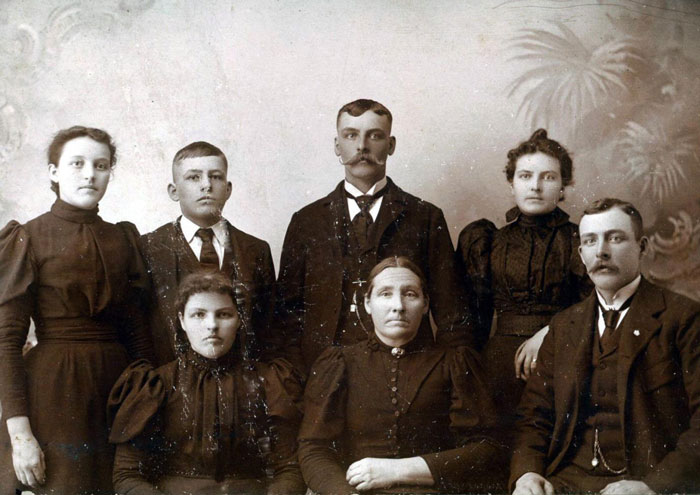
Bernard Edward Bomstad: (1867-1940) Bernard (Ben) married Betty Bowman in 1897. Albert had willed his 200 acres to Ben and Asa and directed them to pay their siblings their rightful shares. After engaging in farming for several years in Section 3 of East Lake Lillian, by 1910 Ben was an agent (seller) of remedies. The 1920 census indicated he drove a medicine cart and lived in nearby Bird Island, Renville County. In 1930 he was a salesman for a nursery.
Ben’s children: Roland (served in army, a dentist), Blanch (housewife), Violet (housewife), Wallace (served in army). Ben’s children lived in Illinois, Florida, and Arizona.
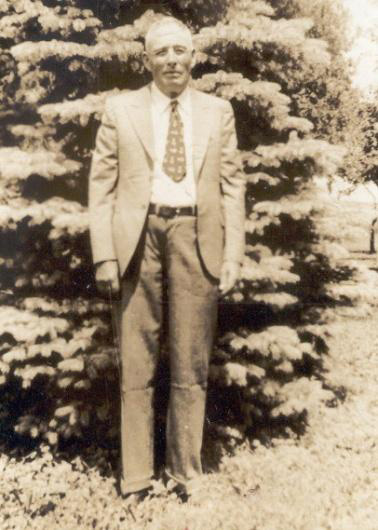
Ben Bomstad
Emily Forskogness: (1869-1945) In 1887, Emily Bomstad married Ole Forskogness, a cobbler and a Norwegian immigrant, in Kandiyohi County. She was 18 and he was 30. They lived in Kandiyohi County, in Roseau, MN, and after 1919 in Minneapolis. At the time of Adrianna’s death in 1905 they may have been living in the state of Washington.
Emily’s daughter Esther was born about 1897 and married Ed Zarmbinski
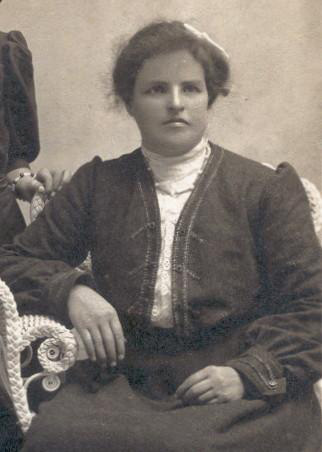
Emily Forskogness
Asa Bomstad: (1871-1957) Asa married Tilda Berglund in 1911 and bought into Tilda’s home farm in Lake Lillian Township. In his early years, Asa worked at a hotel in nearby Atwater, tried his hand at homesteading in North Dakota, was briefly married to Mabel Reidel, played the fiddle, and earned a special steam engineer certificate.
Asa’s children: Lenore (housewife and baker of delicious bread), Irene (died at age 3), Adeline (died after a car accident at age 15), Maurice (railroad engineer), Stanley (farmer), Mike (merchant marines, army, farmer, and mail carrier), and Marion (farmer’s wife). Four of Asa’s grandchildren and several great-grandchildren still live in Kandiyohi County. The Asa Bomstad photo (right) was taken when he was president of the Kandiyohi County Old Settlers Association.
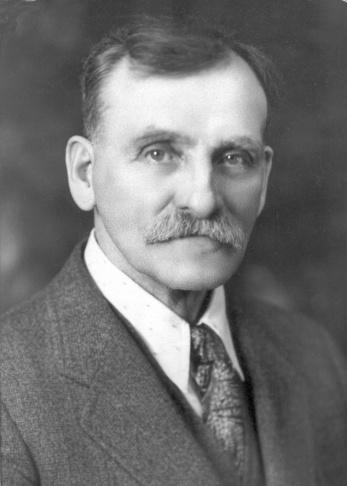
Asa Bomstad
Amanda Bomstad (1874-1897)
Sept 18 1874 - Jan 13 1897
Teacher, traveled to North Dakota,
died from consumption (tuberculosis), buried in Kandiyohi Co
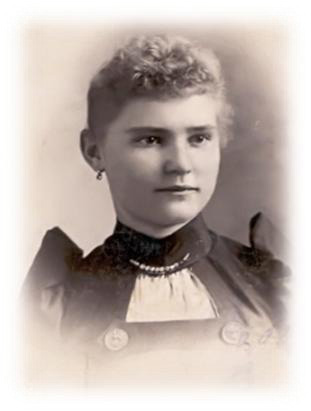
Amanda Bomstad
Charlotte (Lottie) Augusta Hjort (1876-1972) Charlotte Bomstad married Ed Hjort in 1898 in Kandiyohi County. They lived in Kandiyohi County, then Burke and Ward Counties in North Dakota, and finally Sheridan County, Montana. Ed was engaged in farming.
Lottie’s children all lived in Montana: Dewey (farmer, lived to 100), Harry (miner), Ethel (farmer’s wife), Eugene and Irene (died as infants), Alyce (teacher), Wesley (“Bud,” durum wheat farmer).
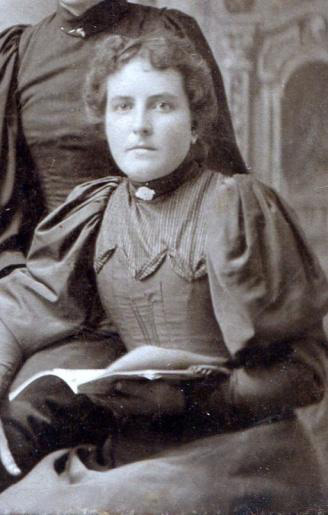
Charlotte {Lottie} Hjort
Hattie Lenore Johnson (1879-1973): Hattie Bomstad met Martin Johnson when he worked as a hired hand for Asa. Hattie married Martin (son of Norwegian immigrants) in 1900 and they soon moved to Big Stone County, Minnesota where Martin was engaged in farming and later road construction. After Martin died, Hattie moved to the Chicago area. Hattie’s children: Ralph (farm work in Montana), Kermit (cabin rentals in northern Minnesota), and Irene (housewife in Westmont, Illinois).

Hattie Johnson
Alexander Eddington Bomstad (1882-1929): In the early 1900s, Alex moved to Big Stone County, Minnesota. There he married Rose Robertson (Norwegian descent) in 1908. Alex farmed in Big Stone County and later did carpentry. In 1929 he apparently died from heart failure after struggling with a bronco. Rose, a widow for 65 years, was left with five children to raise.
Alex’s children mostly lived in Idaho and Washington: Aleanor (died at age 9), Lyla (hotel keeper, cranberry farmer, centenarian), Ken (logger in Idaho), Warren (Coast Guard), Walter (navy), and Audrey (housewife).
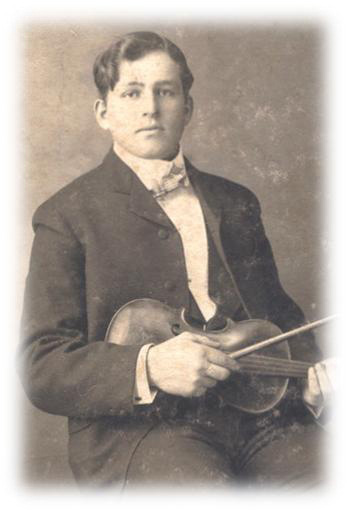
Alex Bomstad
In his military medical disability affidavits, Albert described the ill effects of fording the Missouri River near Fort Union and also the long lasting problems from drinking the Dakota’s alkali water. Albert reported that he used patent medicines after the war for his ill health and stated that Dr. Andrew Nielsen began treating him in 1874. He started receiving disability payments in 1884 because of disease of the liver. His doctor reported that Albert had a yellow color in 1891 and in 1894 Albert died of liver cancer at about age 59. Albert’s medical report said he was 5 feet 9 inches tall with dark complexion, dark hair, and dark eyes.
Having had cancer several years earlier, Adrianna decided to go to Minneapolis for treatment when her cancer returned. Adrianna’s sister, Eline Kraft, kindly attended to her needs while in Minneapolis. Adrianna died in Minneapolis from cancer at the age of 56 and was buried in Kandiyohi County.
Adrianna’s immigrant parents also died early- at the ages of 39 and 51. Two of Albert and Adrianna’s children lived into their 70s, one into his 80s, and two into their mid-90s, so the new land wasn’t as harsh on the next generation as it was on the immigrants.
Albert Johnson legally added Bomsta to his name on March 13, 1880 and went by Albert J. Bomsta. He had been using Bomsta earlier because an 1870 agriculture report and the 1870 U.S. census listed him as ‘Albert Boomstad.’ The 1900 census record used Bomstad for both Adrianna and Ben’s households, so maybe the census recorder aided the Bomsta to Bomstad spelling change. Hattie and Lottie used Bomstad in early 1900s correspondence.
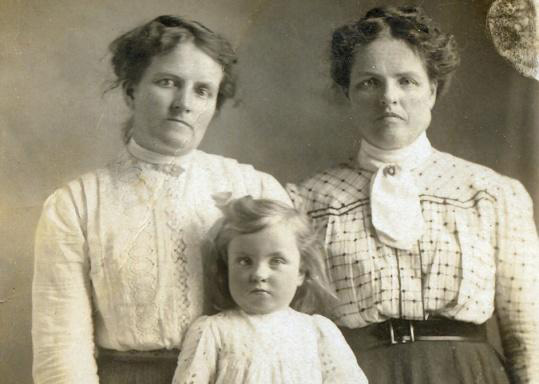
Lottie, Emily and Lottie's daughter Alyce
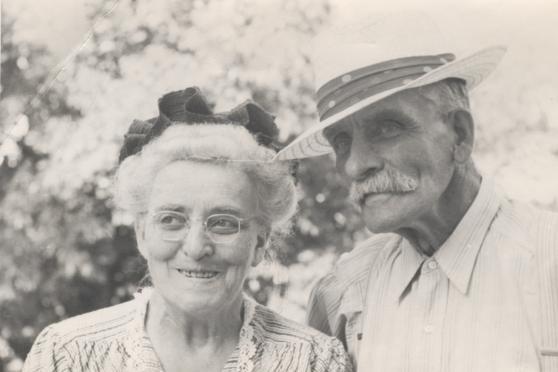
Hattie and Asa
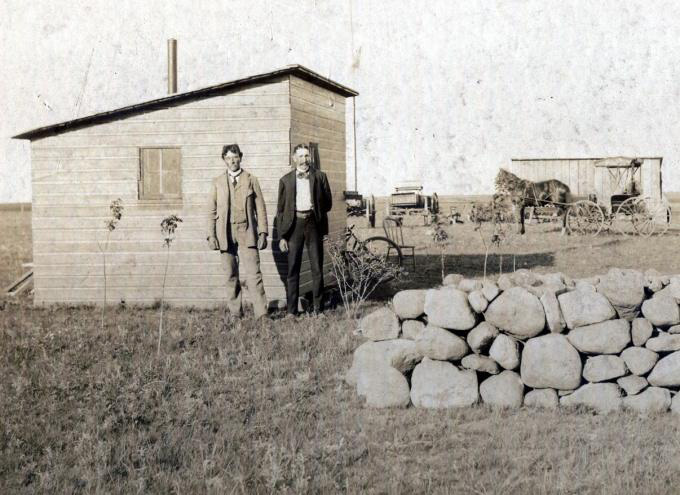
Asa (left) next to his homestead shack in North Dakota
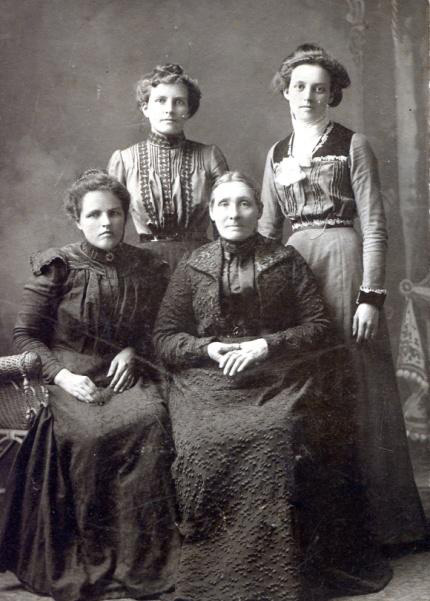
Emily, Lottie, Adrianna, and Hattie
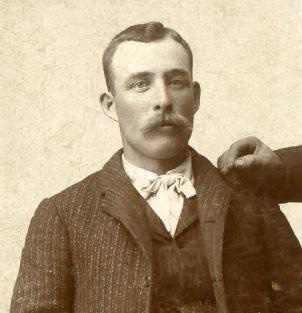
Ben
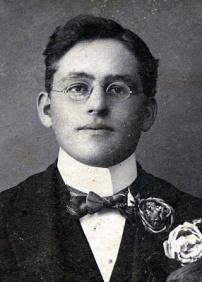
Alex
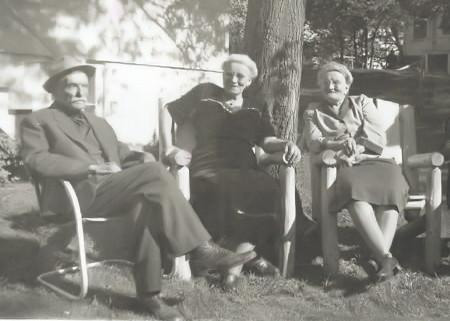
Asa, Hattie, and Lottie at Lenore Peterson’s


Posted by Gary Gauer Oct 19 2016
Adrianna was born at Tennes, Balsfjord, Norway on 5 March, 1849. Her parents were Elias Anderson and Beata Hemmingsdatter. Shortly after her family got settled at Lake Lillian their home caught on fire and burned to the ground. After the fire Adrianna would cook meals on the cook stove which was kept outside in a wagon. They would shovel the snow off it, make and fire and she would prepare the food. She was 15 years old when her mother died. Adrianna took over the responsibilities of caring for the family. All of this was a hard experience for a young girl. One morning while she was out in the wagon cooking breakfast, one of her brothers spotted some Indians in the distance. When Adrianna saw them, she fell into a heap in the wagon in a dead faint. The Indians rode close by, but didn’t stop or bother them.
She fell in love with the neighbor boy, Albert Bomstad. He had returned from the army, as a cavalryman in Co. B. Second Minnesota Regiment and settled on a farm in East Lake Lillian Township. Albert was 32 years old and she was 17. On the day of their wedding in 1866 the bridal couple and their attendants set out in a lumber wagon with oxen to go about 20 miles over the trackless prairie for the wedding. On the way home they spotted a black bear.
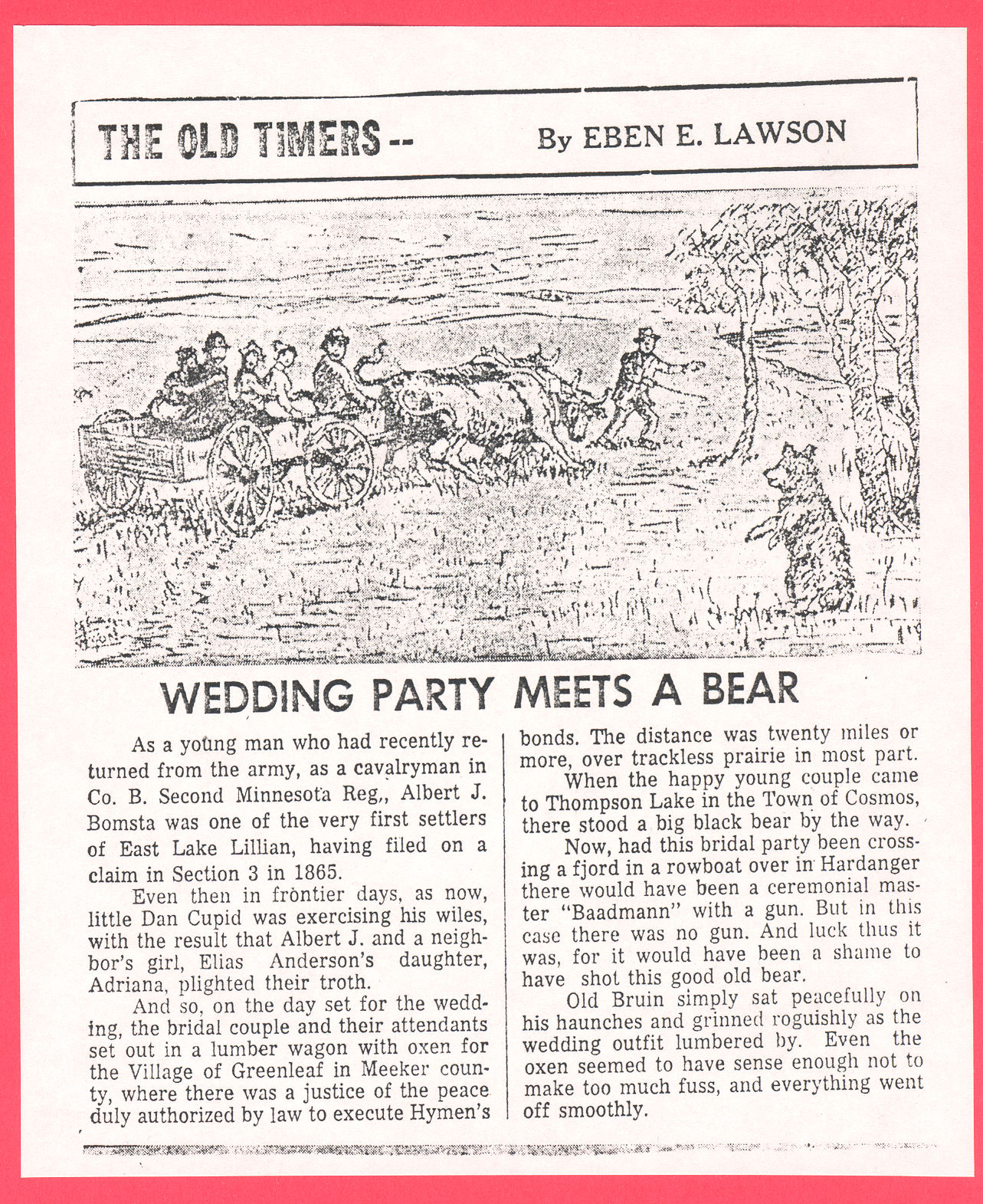
Albert built a log cabin for their first home. They raised seven children on their farm. Albert died on 13 May 1894, age 59. Adrianna died on 13 May, 1905, age 56. They are both buried at the East Lake Lillian Baptist Cemetery.
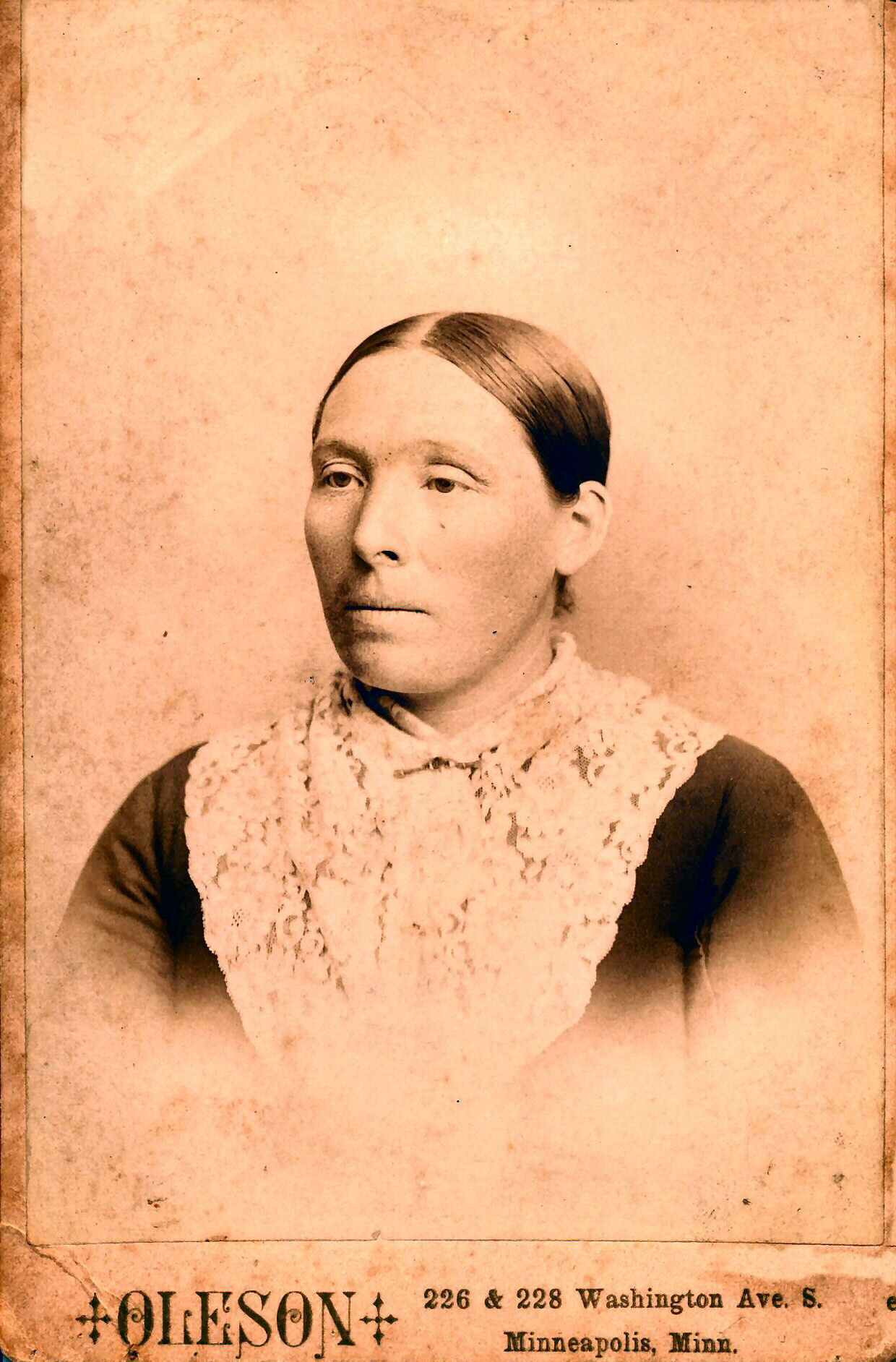
Adrianna
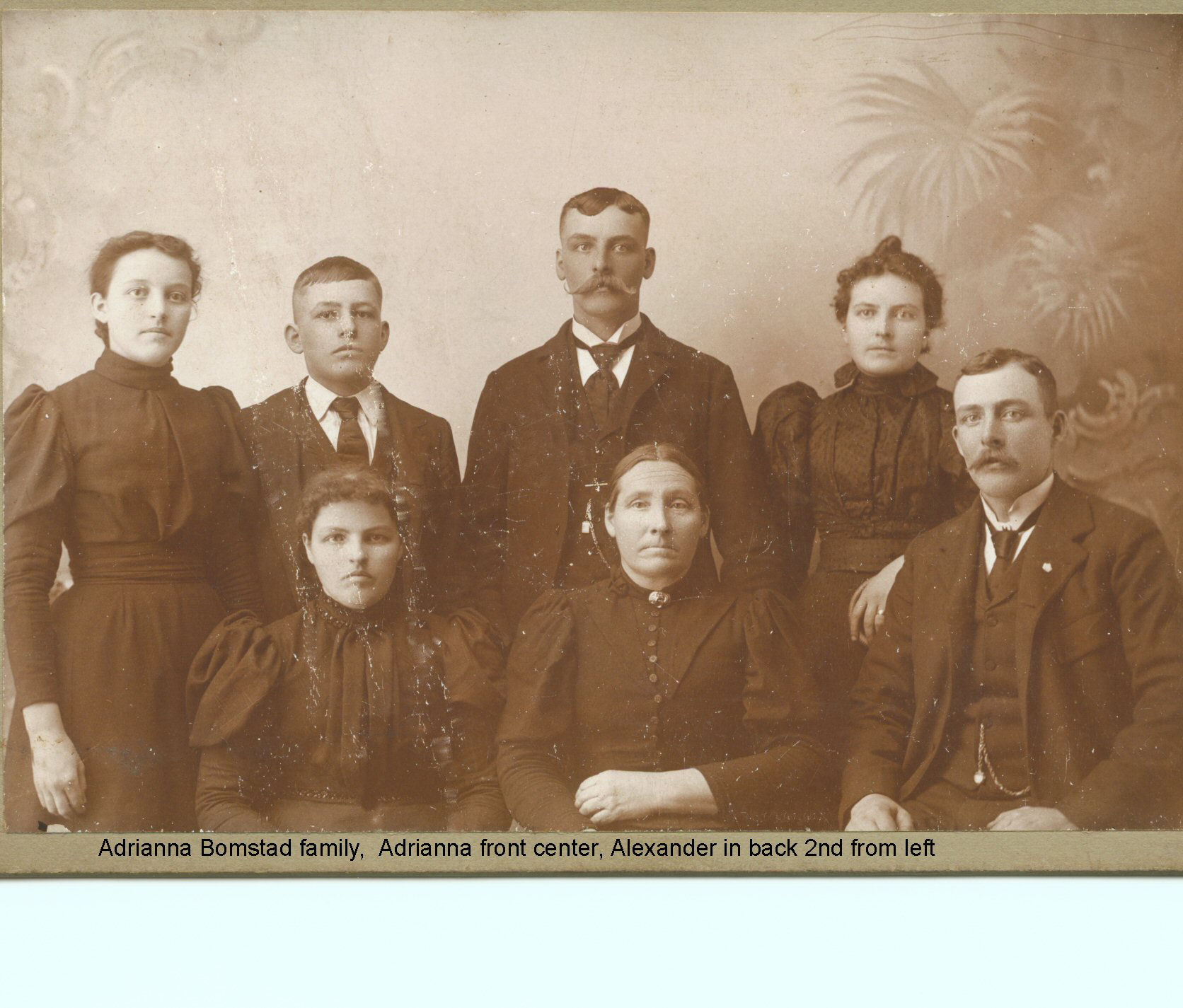
Albert and Adrianna Bomstad Family.
BR Hattie, Alex, Asa, Lottie,
FR Emily, Adrianna and Ben.
Albert is deceased.
Children of Adrianna and Albert Bomstad:
- Bernard 1867-1940 married Betty Bowman
- Emily 1869-1945 married Ole Forskogness
- Asa 1871-1957 married Mathilda Berglund
- Amanda 1874-1897
- Charlotte 1876-1972 married Eddie Hjort
- Hattie 1879-1973 married Martin Johnson
- Alexander 1882-1929 married Rose Robertson
Mrs. Adriana Bomsta of East Lake Lillian died last Friday at Minneapolis where she had been receiving treatment for several months. Her death was due to cancer which first made its appearance several years ago. Her condition became so serious early in the present year that she decided to go to Minneapolis for treatment. For a time she seemed to improve, but subsequently her condition turned for the worse, and she continued to decline until death occurred last week. While in Minneapolis her sister (Elina Anderson Kraft,) who resides there attended her, and everything possible was done for her. The remains were brought to Atwater on Saturday, and Tuesday were taken to East Lake Lillian for internment. The funeral was held at 2 o'clock in the afternoon, at the Norwegian Baptist church of which deceased was a member, Rev. Borsheim officiating. The funeral was largely attended.
Deceased was a native of Norway, being born there 56 years ago. She came to this country with her parents at an early age and settled first at St. Peter. In 1864, the families moved to East Lake Lillian, and were among the first settlers there. She resided there continuously for a period of forty years. She leaves to mourn the loss three sons and three daughters. The sons are B. E. Bomsta and Asa Bomsta both of East Lake Lillian, and Alex Bomsta of Big Stone County. The daughters are Mrs. Ole Forskognes of the state of Washington, Mrs. Ed Hjort of Kenmare, N. Dakota, and Mrs. Martin Johnson of Big Stone County. She also leaves several brothers and sisters, among them being J. S. Anderson of the town of Gennessee, Andrew E. and Hemming Anderson of Lake Lillian, a sister in Minneapolis and a brother and sister in Montana. Her husband Albert Bomsta died several years ago. The surviving members of the family will have the sympathy of their many friends.
Among those who came from a distance to attend the funeral were Mr. and Mrs. Martin Johnson and Alex Bomsta of Big Stone County.